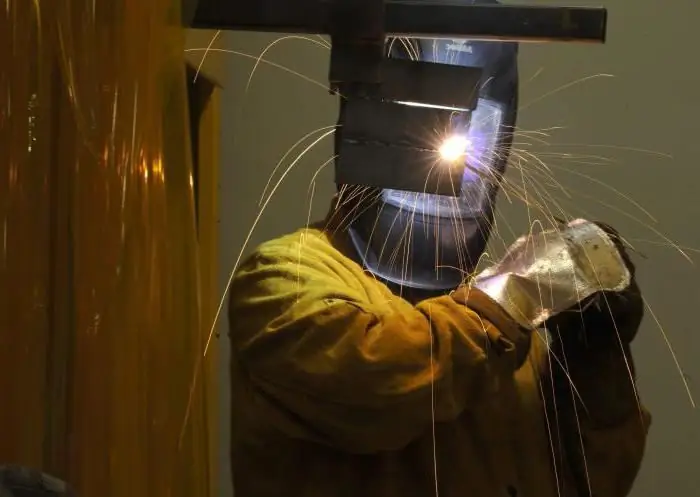2026 Author: Howard Calhoun | [email protected]. Last modified: 2025-01-24 13:10:34
The job description of a veterinarian is an official document that sets out the main duties, rights and requirements of this specialist. Its presence is mandatory for all institutions where specialists in this area are hired.
General provisions of the instruction
This section of the document displays the basic requirements for specialists accepted for this post, reveals the boundaries of a specialist's knowledge. Also in this section of the instructions it is indicated what serves as a support for the veterinarian to perform actions within the framework of his activity.
The job description of a veterinarian states that a veterinarian belongs to the category of specialists. Hired and dismissed by the head of the enterprise or his representative in the person of the head of the structural unit or other official.
A person who has been trained as a veterinarian in a higher educational institution is accepted for the post of veterinarian. They are not required to have work experience in their speci alty.

A veterinary doctor of the 2nd category can become a person who has studied as a veterinarian at a university and has the education necessary for employment. This position requires at least three years of experience as a veterinarian.
A veterinarian of the 1st category is a specialist who studied as a veterinarian and has a higher education. A prerequisite for admission to this position is at least 3 years of experience as a veterinarian of the 2nd category.
The main elements that guide a veterinarian in their work are:
- Regulatory legal acts, guidance and methodological materials that are relevant to the work performed by a veterinarian.
- Charter of the organization, as well as orders and directives of the immediate supervisor or head of the organization.
- Job description of a veterinarian.
If a veterinarian is temporarily absent, then his duties are performed by a person appointed by the management of the organization to be responsible. This person may be a veterinary assistant or other specialist specified by management in the relevant order.
Veterinary Knowledge Area
The job description of a veterinarian provides a complete description of what is included in the field of knowledge necessary for the correct performance of all his duties. An appropriate level of knowledge greatly simplifies the work and reduces the number of comments from the management.
The list of things a veterinarian should know includes:
- Veterinary and sanitary statutes, instructions and codes of practice.
- Guiding and regulatory documentation describing the production activities of the organization.
- Technologies for the production of dairy and meat products, as well as other livestock products.
- Specifications and standards that determine the quality of products.
- Code of rules for the veterinary and zoohygienic maintenance of animals.
- Microbiology and epizootology.
- Types and rules for the use of medicines and disinfectants.

Also, the veterinarian's area of expertise includes knowledge of the basics of economics, production, labor legislation, management, regulatory and legislative acts regarding environmental protection, fire safety and labor protection norms and rules. The job description also states that a veterinarian of any qualification category must know the procedures and rules by which veterinary and sanitary examinations, disinsection, disinfection and deratization are carried out.
Job Responsibilities
The primary duties of a veterinarian include carrying out preventive measures aimed at preventing diseases in animals and their death, as well as monitoring the implementation of veterinary and zoohygienic rules for keeping animals, provided for by the charter of the organization. He also performs animal treatment and procedures for disinfection, disinsection andderatization on the territory of the organization and premises intended for the storage of raw materials and products.
This specialist's responsibilities also include:
- Inspection of animals before slaughter.
- Conducting veterinary and sanitary examinations of products obtained after slaughter.
- Performance of pathoanatomical autopsy of animal corpses.
- Implementation of veterinary branding of carcasses and skins of slaughtered animals.

In addition, the veterinarian is obliged to check meat and meat products with the formation of appropriate conclusions on the suitability of products, as well as to monitor the sanitary condition of products produced by the organization. His duties include monitoring the storage conditions of raw materials, meat and meat products in warehouses.
The job description also provides for such duties as drawing up acts on low-quality products, keeping records and preparing reporting veterinary documents established by the organization's governing and regulatory documents. The list of duties of a veterinarian completes the list of duties of a veterinarian to monitor compliance with the rules and regulations of fire safety and labor protection by employees who are directly subordinate to him, for example, an assistant to a veterinarian.
Basic rights
The job description implies not only duties, but also the rights that a veterinarian is endowed with as part of his work activity. According to this document, the veterinarian has the right to familiarize himself with the projects andmanagement decisions that are directly related to his professional activities. There is also the right to make suggestions that will help improve the performance of the duties provided for in the job description.

The list of rights of a veterinarian also includes the ability to report to the direct management about the shortcomings in the work of the organization or its structural element, which were identified during the performance of immediate duties. There is also the right to make suggestions on how these shortcomings can be addressed.
The rights of a veterinarian also include the ability to demand documentation or information that is necessary for the implementation of professional activities, both personally and at the request of the management team. Among other things, the veterinarian has the right to require assistance in the performance of the duties stipulated by the position from the management of the organization.
Job Relationships
This section of the job description describes how a veterinarian can interact with employees of the organization. According to this document, the veterinarian reports only to the head of the structural unit or another official who performs the duties of the head.
Interaction with other employees of all structural divisions of the organization should not go beyond the competence of the veterinarian. According to the job description, this interaction is to receive and providedocumentation or information that is directly related to the work performed by the veterinarian.
Veterinarian Responsibility and Performance Evaluation
A specialist working as a veterinarian is liable for improper performance or non-performance of his/her immediate duties. Also, this employee is responsible for non-compliance with the rules provided for by the charter and other regulatory documents of the organization regarding the norms and rules of labor protection, fire safety and internal regulations of the organization.

Evaluation of the results of the work carried out is carried out by the head of the structural unit, to which the veterinarian is assigned. Another official may also conduct such an assessment.
Conclusion
The job description of a veterinarian describes the main points that are needed for the quality performance of immediate professional duties. The rights and rules of interaction prescribed in it fix the scope of competence of this specialist.
Recommended:
Job description of the sales floor controller: duties, job description and requirements

There are hundreds of different professions, and the sales floor controller is one of them. This profession can hardly be called prestigious. They don’t dream about it, starting from the school bench. But it is one of the basic ones. The work of its representatives is not so noticeable and obvious, but it is beneficial for society. Let's learn more about the job responsibilities of a sales floor controller and other features of this profession
Job description of a psychologist - duties, job description and requirements

Not every person knows the duties of a psychologist. Many have a hard time imagining what this specialist does. What are the requirements for it in various organizations. What rights does a psychologist have? Who is suitable for this profession
The profession is a veterinarian. Where to study to be a veterinarian. veterinarian salary

The need for a specialist who would be able to treat animals has appeared since man began to tame them. In modern society, the profession of a veterinarian is still needed and important. This is the specialist that people who have sick pets turn to
Job description of an electric and gas welder. Typical job description

Service Instruction - a regulatory document that prescribes the obligations, privileges and responsibilities of employees of the enterprise in carrying out activities that correspond to his position
Should I sell my property now? Should I sell real estate in 2015?

Should I sell my property now? Surely this question worries a huge number of residents of our vast country

